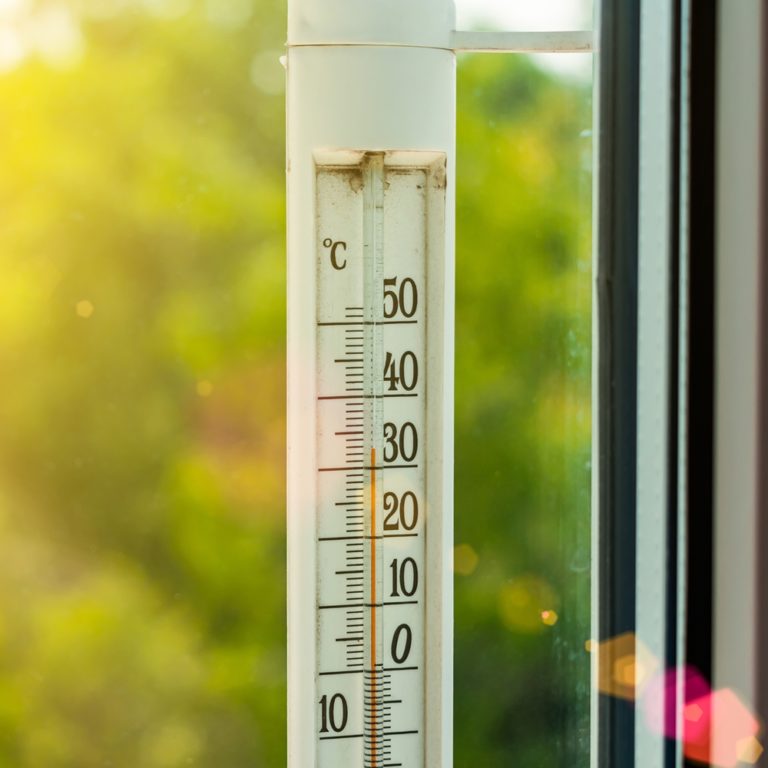Call us: +44 (0)1227 789 649 - Monday to Friday 9am to 5pm
Climate Science II - Weather Forecasting
Climate Science II – Weather Forecasting 100 hours Certificate Course
Contact us
PayPal Pay Later
Pay in 3 interest-free payments
-
Choose PayPal at checkout to pay later with Pay in 3.
-
Complete your purchase with the first payment today.
-
Remaining payments are taken automatically.
Pay in 3 is a form of credit, so carefully consider whether the purchase is affordable and how you will make the repayments. Be aware of the possible impact of using Pay in 3 and of missing payments, including making other borrowing more difficult or more expensive. Pay in 3 eligibility is subject to status and approval. 18+ UK residents only. Available for purchases of £30 to £2,000. Terms and conditions apply. PayPal Pay in 3 is a trading name of PayPal (Europe) S.à r.l. et Cie, S.C.A. 22-24 Boulevard Royal L-2449, Luxembourg.
Learn About Climate Science II - Weather Forecasting
LEARN TO UNDERSTAND HOW WEATHER CAN BE PREDICTED
Climate Science II- Weather Prediction helps you learn about how to understand weather patterns, which will help you understand how to forecast weather and atmospheric conditions.
You will learn to understand long and medium term forcasting and weather patterns.
This course is ideal for professional development, for people who rely on having a greater understanding of weather patterns, including farmers, horticulturalists, or people who spend a lot of time outdoors for their hobbies or interests.
- The Practical Applications learned in this course can help in dealing with the many weather situations that challenge us:
- Farmers can be better prepared and plan accordingly
- Helps Urban managers plan better when tackling urban developments
- Equips Gardeners, landscapers and land managers to manage their work in the short & long term periods
- Better results for the management of water and land resources
- Events and activities planning can be tailored to the approaching forecast weather conditions
- How to be better prepared for Managing severe conditions
- Helps forecasting and navigation for flying and sailing
- Outdoor pursuits and activities can have better outcomes when knowing beforehand the weather conditions
Course Information
Other Categories
Lessons
There are 8 lessons:
1. What to Measure
- What is Weather Forecasting?
- Weather Warnings
- Weather forecasting
- Impacts to people
- Impacts for farming
- Weather factors
- Cloud cover
- Minimum temperature
- Maximum temperature
- Dry bulb temperature
- Wet bulb temperature
- Wind speed
- Wind direction
- Precipitation
- Absolute humidity
- Relative humidity
- Dew point
- Mean sea level pressure
- Station level pressure
- Water vapour pressure
- UV index
2. Tools for forecasting
- Equipment
- Weather stations
- Weather balloons and drones
- Satellites
- Recording, Storing and Processing Data
- High Performance Computers
- Numerical Weather Forecasting
- What should be in a minimal weather station?
3. Types of Forecasting
- Persistence Forecasting
- Climatological Forecasting
- Use of a Barometer
- Looking at the Sky
- Nowcasting
- Numerical Weather Prediction models
- Statistical Forecasting
- Analogue Forecasting
- Ensemble Forecasting
4. Weather Models
- Introduction
- Weather models data sets and global weather models
- ECMWF
- GFS
- How Weather Models are Built
- Grid size
- Problems with the Grid
- How do parameterisations work?
- Model Uncertainty
- Data Assimilation
- Mesoscale/Regional models
- The Human Element of Weather Modelling
5. Predicting Temperature
- Diurnal temperature variation
- Forecasting maximum temperature
- Forecasting minimum temperature
- Effect of snow cover
- Severity of frost
- Forecasting grass minimum temperature
- Minimum temperature on road surfaces
- Heat Stress Determination
- Urban Heat Island
6. Predicting Rain
- Introduction
- Convection and Showers
- Forecasting convective cloud
- Forecasting showers
- Forecasting cumulonimbus and thunderstorms
- Layer clouds and precipitation
- Layer cloud formation
- Condensation trails
- Orographic rainfall
- Formation of stratocumulus
- Precipitation associated with layered clouds
- Snow
7. Air Conditions
- Introduction
- Air Quality
- Air Pollution and Its Effect on Climate
- Carbon Dioxide
- Methane
- Airborne Chemicals
- Air Particles
- Pollen and Allergies
- Radon
- Wind and Turbulence
- Mechanical Turbulence
- Thermal Turbulence
- Frontal Turbulence
- Wind shear
- Humidity
- Visibility
8. Practical Applications
- Introduction
- Severe Weather Alerts
- Aviation
- Marine
- Agriculture
- Forestry
- Utility Companies
- Private Sector
- Military
- Medicine and Human Health
- Waves and surges
Learning Goals
- Determine where and when to measure factors affecting weather in order to predict weather conditions with relative and economically viable probability in any designated place.
- Describe the use of different tools and equipment used to measure and analyse weather conditions.
- Compare different types of forecasting to select the most appropriate type for situations encountered.
- Explain how weather models are constructed and what they mean.
- Explain how temperature ranges might be predicted.
- Describe how rainfall is predicted in the short, medium, and long term.
- Predict air conditions including humidity, turbulence, visibility, pollutants,
- Apply an understanding of weather forecasting in practical ways to different industries.
Practical (Set Tasks)
Examinations
Program Summary
More Information
WHAT TO MEASURE WHEN DEALING WITH WEATHER PREDICTIONS
Knowing the likelihood of future weather conditions improves our ability to plan. It allows farmers to plan what to farm, and when to farm. It enables urban development to be managed better, and it allows events to be planned with a better chance of success. Weather cannot be predicted with 100% accuracy though. As a rule, the more data available, the greater probability of prediction accuracy.
WHAT IS WEATHER FORECASTING?
Weather forecasting is utilising information gathered using tools and technology to predict the atmospheric conditions in a particular region at a future time. Due to the ever-changing nature of the atmosphere, forecasts tend to be most accurate for short term predictions and decrease in accuracy the further out from the timeframe.
Forecasting considers computer simulations, observations, and measurements such as barometric pressure to predict future atmospheric conditions.
WEATHER WARNINGS
Weather warnings are advice provided by meteorological monitoring organisations that detail potentially hazardous or dangerous weather events when they are predicted to occur or develop in an area.
Severe weather warnings may be issued for significant rainfall events, flooding, cyclones, fires and many more weather systems depending on the climatic region.
Weather warnings are highly region specific and normally issued by government funded departments. These are serious warnings of impending weather events that have the potential to cause serious harm or damage.
They can be given ratings of severity such as that issued for cyclones, hurricanes and typhoons or generalised warnings such as “severe”, “moderate” or “minor”. Warnings are typically associated with weather maps that visualise the affected areas and predict the duration and intensity of the event.
These events can be rainfall, fire, wind, flood, and even longer term such as drought from El Niño and monsoonal events driven by La Niña.
WEATHER FORECASTING
Weather forecasting uses information and modelling about climactic conditions to predict atmospheric conditions including temperature, rainfall, wind, humidity, cloud cover and pressure. The prediction of these conditions is based on probability such as the probability that there will be rainfall on a given day.
These probabilities are determined through complicated meteorological models that account for atmospheric conditions along with historical data and climactic patterns. Weather forecasting can predict on a fine scale such as hourly, or as far into the future as required.
It is important to remember that with weather forecasts, the more data available and the closer time frame, the greater probability of prediction accuracy. A two-day forecast will have a greater accuracy than a 2-week forecast.
Assessment
Assessment is based on a combination of completing all assignments and sitting for a final short one and a half hour exam, in your own location.
If you don’t cope well with exams then you may elect to undertake a project instead. This is a popular option.
In addition, most modules have a Set Task at the end of each lesson placed before the assignment. This is an opportunity to undertake practical work to help you acquire knowledge and skills and practical experience. This ADL feature is an added bonus not found at most online schools. Set Tasks are not required for assessment.
Some courses also have optional Self-Tests which are available on our online learning platform. These are not available by correspondence or by USB, and do not form part of your overall grade.
How our courses work
- Choose Your Learning Method
You choose how you would like to receive your course material, i.e., Online, USB or Correspondence. The choice is yours. You may also work on online or offline. - Tutor Allocation
Every student is assigned their own dedicated tutor who is an expert in their subject area. They provide as much or as little individual contact as you require. You can contact your tutor whenever you need – your hours are not limited. - Feedback and Assignments
Tutor Feedback is an essential component in helping you understand the subject matter. Tutor feedback is given in the form of notes written on the assignment. We encourage you to contact your Tutor where help with clarification and understanding of course material may be required.
Your assignments are located at the end of each lesson. You submit them for marking whenever you are ready. There is no time limit. - Set Tasks and Self-Tests
Most modules have a Set Task at the end of each lesson before for the assignment. This is where you get the opportunity to undertake practical work to help you acquire knowledge, skills and practical experience. Many modules also have short Self-Tests. - Exams
Once all assignments have been completed you may then elect to sit for a one and half hour exam in your own location. If you prefer not to take the exam you do have the option to undertake a project instead.
Once the exam or project part of the course is completed, your Certificate is then processed. Please allow approximately 4 weeks for this. - Design Your Own Qualification
ADL offers students the flexibility to self-design their own qualification – bundling together a combination of 100-hour modules into a qualification higher than a certificate.
FAQ
FREQUENTLY ASKED QUESTIONS
Here is a list of the most often asked FAQ’s.
General
Q. Why should I enrol with the Academy for Distance Learning?
A. Here at ADL, our students are our priority – we treat everyone as a unique individual.
Q. Do I need to buy text books?
A. No, as each module has been written by highly qualified industry professionals. The content of the material is presented in such a way that text books are not required. However, if you require additional reading your tutor will be able to supply a list.
Q. What happens if I have to stop studying for a while? (eg. become sick, go on holidays, have a baby, move house, etc)
A. It’s OK to take a break and start up your study at a later point in time. Just let us know.
Q. Is there an age limit?
A. There is no maximum age limit. We do however, have a minimum age limit of 18 years. Below that age parental consent would be required.
Q. Are your courses up-to date?
A. Our courses are revised and updated on a rotation system.
Q. Do you have a Cancellation policy?
A. Yes. We have a cancellation policy that is fair and equitable. For further details please click here.
Q. Will I have any opportunity to engage with other students?
A. We have a Student Community group based on facebook! If you don’t have a facebook account already, you could make one just for talking with fellow students on the group.
Enrolment
Q. When can I enrol/start?
A. You may enrol and start at any time of the year – it’s all self- paced.
Q. Can I study from anywhere in the world?
A. Our courses are available to anyone, anywhere in the world from the comfort of your own home. The course content is relevant to any country, culture or economy.
Q. How long do I have to complete the course?
A. You complete the course at any time that is convenient for you.
Q. Completing a 100 hour module – how long will it take?
A. For some students a 100 hour module will take approximately to 3- 6 months to complete. Others take less time and some even longer.
Assessment
Q. Assessment – how does it work?
A. For each 100 hour module you are assessed by assignments (at the end of each lesson) and a final one and a half hour exam (or you may elect to complete a Project, instead of sitting the exam) – the choice is yours – you sit for the exam in your own location.
Q. I don’t cope well with exams – what can I do?
A. You may elect to undertake a Project (set by your tutor) instead of sitting the exam. Projects are completed from your home and can usually take a couple of weeks to complete.
Q. If my assignment is not up to standard is there an opportunity to resubmit my work?
A. Yes –
Q. How many assignments do I need to complete for each module?
A. At the end of each lesson, there is an assignment – so if a course has say, 10 lessons, there would be 10 assignments.
Q. I am having difficulty attending workshops/industry meetings, what can be done?
A. If your course requires attendance at workshops, conferences, or industry meetings; alternative arrangements can be made in your country.
Qualifications
Q. What qualification will I receive?
A. For individual modules, you would be awarded a Certificate endorsed by TQUK (Training Qualifications, UK), providing you complete all assignments and the exam. If you just want to complete only the assignments and not sit for the exam or finish a Project, then a Letter of Achievement would be awarded. For more details on qualifications available please click here.
Q. Can I customize my diploma/higher qualification?
A. Not all educational institution’s certificates /diplomas meet everyone’s needs. The opportunity to Design Your Own Diploma at the Academy (subject to our approval) is an added bonus, not found at other colleges. You choose modules that you think will help you in achieving your goal.
Q. What do I get when I complete the course? Will I receive a transcript?
A. At the completion of all courses and providing all assignments and exam requirements have been met, you will receive your Award and a Transcript.
Tutors
Q. Our tutors – who are they?
A. We appoint Tutors and require that they must be currently active in their industry, with at least 5 years’ experience in their chosen profession.
Q. Can I contact my tutor at any time?
A. Yes – you have unlimited access to your tutor via email through our Online Classroom. You can always leave a message with ADL requesting your tutor to contact you. You decide on how much or how little contact you wish to have.
Q. Practical work – How is this done?
A. To find out more about this part of the course please visit the section on How Our Courses Work here.
Career Options
What's Included
What your tuition fees include
- All Course Material via Online, USB or Correspondence
- Assignments Marked
- Professional Tutor Feedback
- Set Tasks - Practical Exercises to help you develop skills
- Self-Tests – multiple choice questions at the end of lessons in most modules
- Unlimited Personal Tutor Support – via our student classroom
- Committed and Friendly Admin Support – vital to your success
- All ADL Exam or Project fees (exception RHS exams)
- Qualification Certificate
- Official Transcript with assignment grades
- Student Manual
Plus FREE
- Academic Writing course (optional - 10 hours only)
- Critical Thinking course (optional - 10 hours only)
- Job Seekers Careers Guide
- Study Tips on How To Study Better
- Career Counselling by ADL Staff
- CV Writing Help, Tips and Advice
There are no hidden extras
Career Opportunities
FAQ - RHS Theory Qualifications
GENERAL
If you require further details about any of the RHS industry recognised qualifications please, call one of our friendly RHS Course Advisors on +44 (0)1227 789 649 or email: [email protected]
Q: When can I Enrol/Start My RHS Course With ADL?
A: Anytime, Anywhere. There are no enrolment deadlines.
Q: I live Overseas. Can I Study From Overseas?
A: You can study any of the RHS theory qualifications overseas. All courses are offered in English. You will need to email RHS Qualifications direct to arrange sitting for your examination overseas.
Q: Is There a Time Limit for Completing an RHS Qualification?
A: At present there are no time limits. However, RHS is contemplating in the future, the introduction of course time-lines.
Q: Are There Any Entry Requirements (Pre-Requisites)?
A: The RHS Theory courses do not require prerequisites, previous experience or any knowledge of horticulture. You just need passion for all things horticulture.
Q: What Course Should I Start With First? I Am New To RHS Qualifications.
A: We highly recommend that you start with Level 2 – Principles of Garden Planning, Establishment and Maintenance.
Q: What Does ADL Course Material Include?
A: Includes Power Point Presentations, Videos and written course lessons.
RHS EXAMS
Q: When Do Exams Take Place?
A: Exams are held on fixed dates in February and June of each year. You should register as a candidate at least 3 months before these dates, so please do not leave exam registration to the last minute
Q: Where Do I Take My Exams?
A: UK: You take the exams at the RHS Wisley Centre, located between Cobham and Ripley in Surrey or at other authorised RHS centres around the UK.
Overseas: please email RHS qualifications direct for centre information.
Q: Exam Pass Marks?
A: Module – pass 50%. Commendation 70%.
Qualification: 50% pass for all modules.
Commendation awarded for all modules.
Each question carries a value of 10 marks.
Q: I’m Not Happy With My Exam Results?
A: You have the opportunity to re-sit your exam at the next opportunity.
There are no restrictions on the number of re-sits you can take. The highest mark you achieve will remain.,







